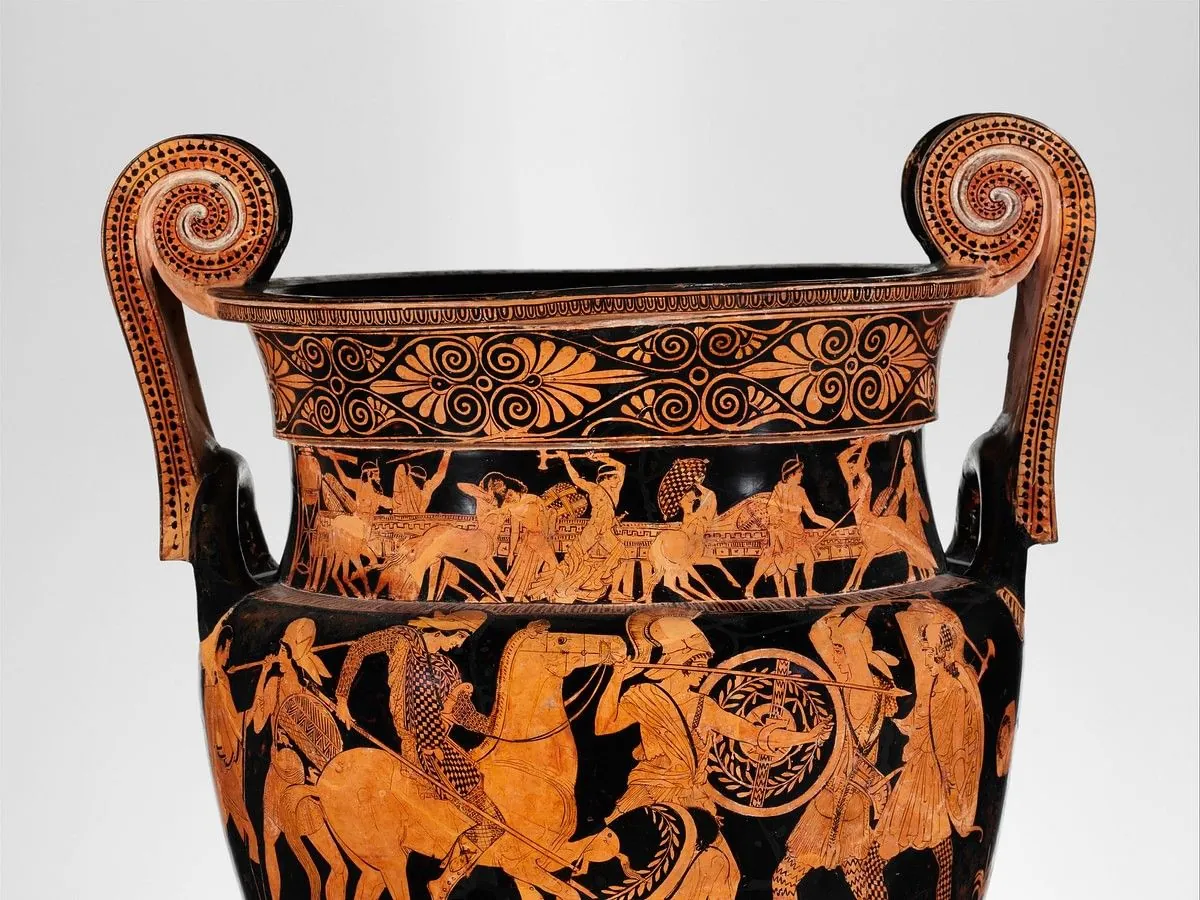Ancient Greek Vase Returns Home After 71 Years in Italian Family
A 5th century B.C. Greek vase, gifted to an Italian PM in 1953, has been voluntarily returned by his grandson. The artifact, symbolizing post-WWII gratitude, will be displayed in Athens.

In a gesture of goodwill, an ancient Greek vase has found its way back to its homeland after more than seven decades abroad. Paolo Catti De Gasperi, grandson of former Italian Prime Minister Alcide De Gasperi, has voluntarily returned the artifact to Greece, 71 years after it was presented as a diplomatic gift.
The vase in question is a mid-to-late 5th century B.C. crater, a type of vessel used by ancient Greeks to mix wine with water. This particular crater, adorned with red figures on a black background, depicts a poignant scene of a woman bidding farewell to two warriors departing for military service on one side, and three young men in civilian attire on the other.

The artifact's journey began in 1953 when Greek Prime Minister Alexandros Papagos presented it to Alcide De Gasperi during a state visit to Athens. This gesture was a token of gratitude for De Gasperi's role in ceding the Dodecanese islands to Greece following World War II. The Dodecanese, a group of 15 larger and 150 smaller islands in the Aegean Sea, had been under Italian control since 1912 when Italy seized them from the Ottoman Empire.
The return ceremony took place at the Greek embassy in Rome, located in the historic Villa Borghese area. Lina Mendoni, the Greek Minister of Culture and Sports since 2019, received the vase from Paolo Catti De Gasperi.
"We are particularly grateful, because, while (Catti De Gasperi) held (the crater) completely legally, he felt the need and had the generosity to return it to Greece. It's a family heirloom that's linked with the modern history of both Greece and Italy."
This voluntary return stands in contrast to Greece's ongoing efforts to reclaim its cultural heritage from museums and private collections worldwide. The most notable case is the pursuit of the Parthenon Sculptures, also known as the Elgin Marbles, currently held in the British Museum.
The significance of this crater extends beyond its artistic value. It serves as a tangible link between ancient Greek craftsmanship and modern European history. Alcide De Gasperi, the vase's original recipient, is considered one of the founding fathers of the European Union, while Alexandros Papagos, who gifted the vase, was a Greek Field Marshal who led the Greek army in World War II before becoming Prime Minister.
The crater will find its new home in a museum at the ancient Kerameikos cemetery in Athens. This site, once the potters' quarter of ancient Athens, includes the famous "Street of Tombs" and provides a fitting backdrop for this historically significant artifact.
As we reflect on this gesture of cultural repatriation, it's worth noting that ancient Greek pottery provides some of the most distinctive surviving evidence of Ancient Greek culture. The term "crater" itself comes from the Greek word "krater," meaning "mixing vessel," a nod to the ancient Greek custom of diluting wine with water in ratios of 1:3 or 1:2.
This return not only enriches Greece's cultural heritage but also strengthens the bonds of friendship between Greece and Italy, echoing the spirit of cooperation that has shaped modern Europe.


































